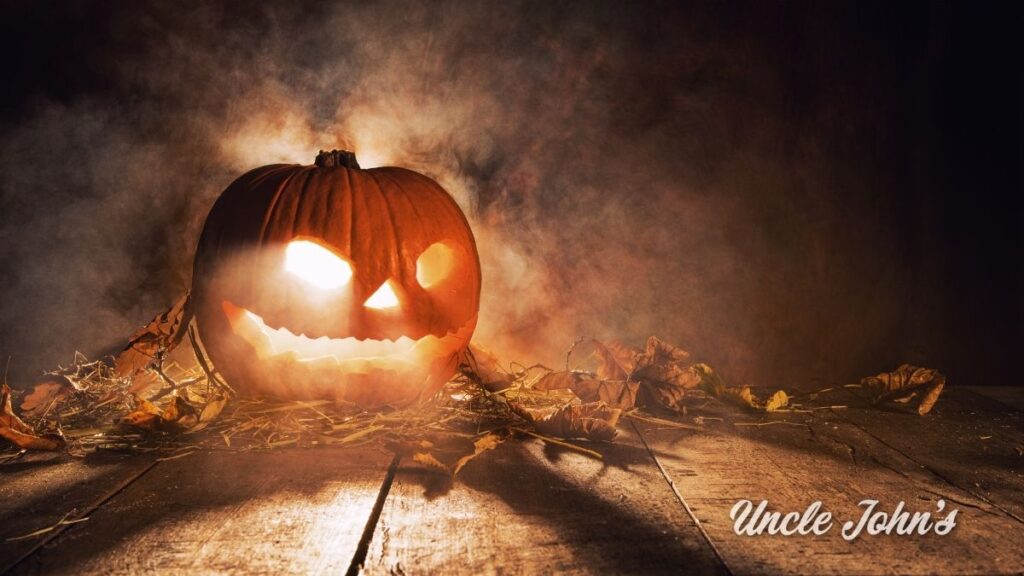Halloween is a holiday steeped in tradition. It just isn’t Halloween if you don’t carve a pumpkin, hand out candy, bob for apples, or fear the dead. Here’s a look at why we celebrate Halloween the way we do.
Why it’s called “Halloween”
The Celts lived in the British Isles, particularly Ireland, centuries ago. Celtic New Year’s Day was November 1, an observance called Samhain, which translates to “the end of summer.” (The Roman Catholic Church adopted Samhain in the seventh century, converting it into All Saints’ Day, or All Hallows’ Day. “Hallow” means holy, and many of the festivities of the evening, or “even,” before Samhain, carried over, giving October 31 the name All Hallows’ Even. Over time, that phrase contracted into “Hallowe’en” and then “Halloween.” shortened over.

Themes of death
As Samhain literally means “the end of summer,” that also means that the dark and dreary winter is about to begin. According to Celtic lore, that’s all very attractive to ghosts, so on the eve of Samhain, when the invisible wall between the realms of the living and no-longer living would dissipate, the dead would return to Earth to haunt the living, just for fun.
Discover more trivia and fun facts with Uncle John's newest Bathroom Reader.
Carving pumpkins and wearing costumes
Both Halloween staples date back hundreds of years to the Irish Halloween-inspiring observance of Samhain. Celebrants wishing to scare off the dead souls who could walk the earth on the eve of Samhain turned to folk wisdom to protect themselves. They wore costumes to disguise themselves and thus disorient the deceased, and then they’d carve a scary face into root vegetables like turnips and beets. October is harvesting time in Ireland for those veggies, so they were in abundance by the time Samhain rolled around. Why not pumpkins? They’re not native to Ireland. French explorer Jacques Cartier introduced them to Europe after discovering them in Canada in the 16th century. The carving faces tradition came to the U.S. with mass immigration, but revelers used pumpkins, abundant in North America in October because that’s when they get harvested.


Trick-or-treating
The pre-eminent Halloween activity for kids evolved out of a 19th century western European Halloween practice called souling. Children would knock on doors in their village and offer to pray for the people who lived there. Holding up their end of the ritual, the residents would say thanks by giving the kids sweet, homemade spice cakes, known as soul cakes.
Little candy bars
By the time trick-or-treating caught on in the U.S. in the 1920s, houses handed out fruit (for which they were well-stocked, because they served oranges and grapes at Halloween parties) or candy. That practice was significantly scaled back in the 1930s due to the Great Depression, as both fruit and full-size candy bars became too expensive to just give away. To increase sales year-round, the Curtiss Candy Company (maker of Butterfinger and Baby Ruth) introduced tiny, “junior” versions of their products. The plan worked, and Curtiss marketed the little bars (later known as “fun size” when Mars would introduce its own line of miniaturized candies in the ‘60s) as an affordable Halloween trick-or-treat giveaway.


Bobbing for apples
It’s a popular game at Halloween parties (or just “welcome fall” parties) because apple production peaks this time of year. Bobbing for apples is a variation on an early 20th century Halloween party game that involves the fruit, a broomstick, and a prank. A sideways broomstick was suspended from the ceiling, with an apple tied to one end and a bag of flour to the other. Then partiers would spin the stick and people would take turns trying to bite the apple…or get hit in the face with a broom or an explosion of flour.









